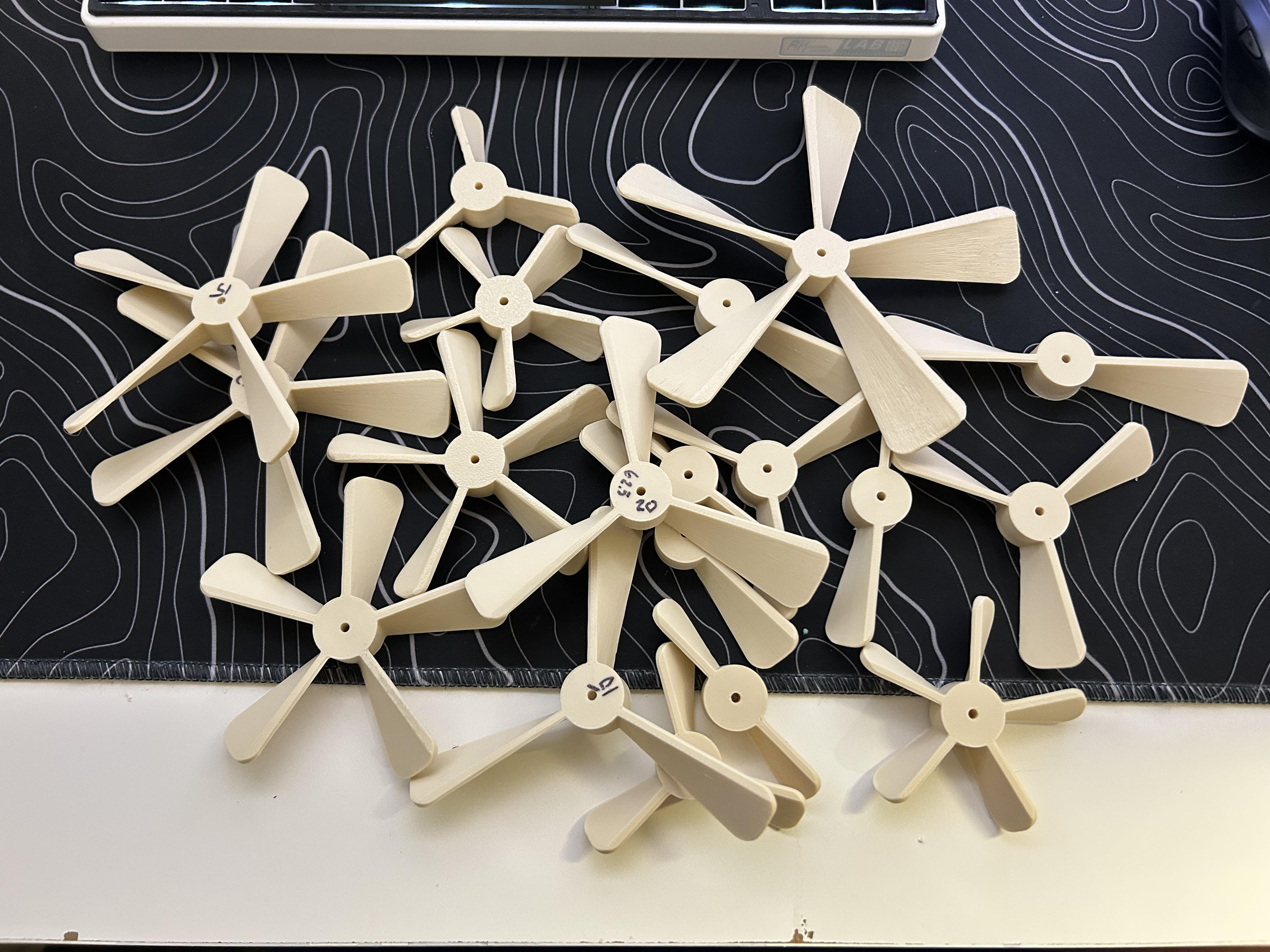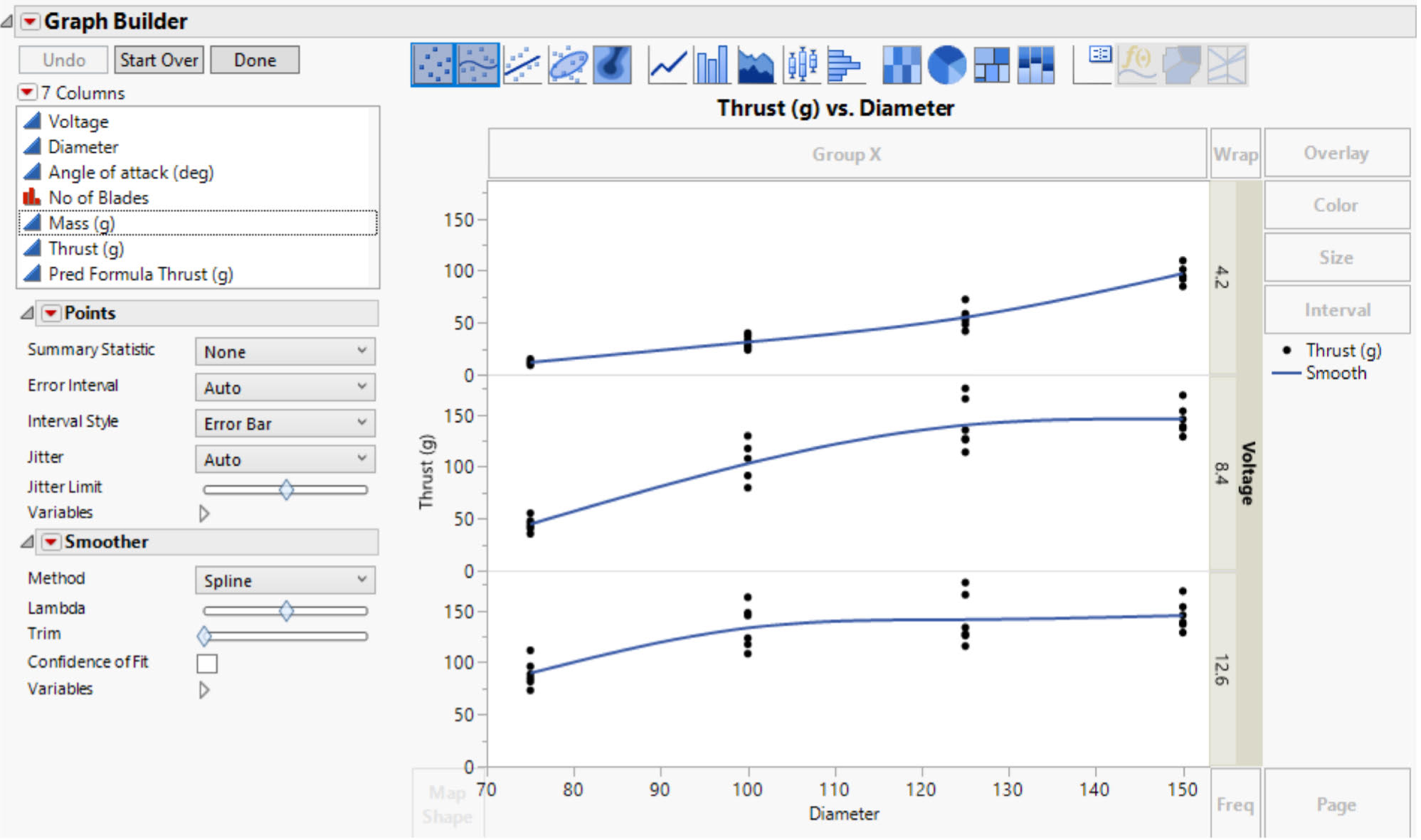Drone Propeller DOE Surrogate Model
This project aimed to create a surrogate model that predicts drone propeller performance (thrust per watt) based on a range of design inputs. A Design of Experiments (DOE) approach was used to sample a variety of geometries and operating conditions. The data generated from physical tests was then used to fit a hyper-surface which could be used to predict the performance of other propeller geometries.
Procedure Applied:
- A Python script using the Fusion 360 API was developed to procedurally generate propeller geometries.
- Latin hypercube sampling (a DOE technique) was used to generate a representative set of 27 unique geometries.
- These propellers were 3D printed and tested under controlled conditions to measure thrust and power consumption.
Skills Applied:
- Python (NumPy, matplotlib, scipy.stats)
- DOE techniques (full factorial, Latin hypercube sampling)
- Data visualization and interpretation
- 3D CAD modeling, printing, and physical testing
Key Outcomes:
- Built and validated a surrogate model that was able to explain 83% of the variance in the data
- Demonstrated the potential for using surrogate modeling to significantly reduce the time and cost of optimizing propeller designs.
Gallery:

3D Printed drone propeller designs that were tested

Results from propeller testing showing how thrust varies with a few parameters